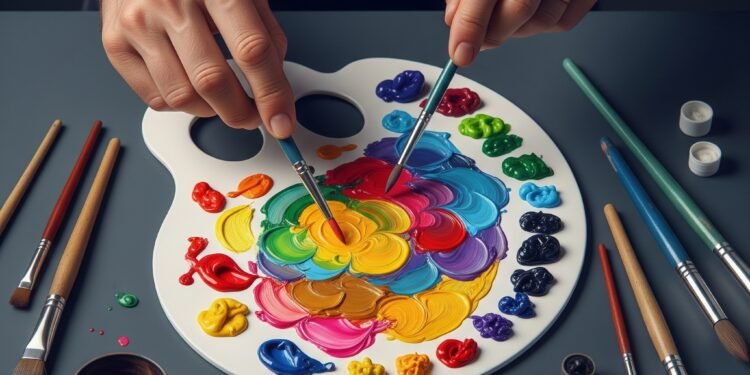Introduction
Gouache Painting: Have you ever had that time when you stumble upon something and you think to yourself, Why didn’t someone tell me about this sooner! That was me with gouache five years ago. I’d been struggling with watercolors that never gave me the opacity I wanted and acrylics that dried too fast and looked too plasticky. And then my art teacher gave me this tub of random dessert-in-a-tube from Winsor & Newton Designer Gouache, and she said, “Try this.”
All right, I’m not going to lie: when it comes to the gouache painting, I was confused AF for awhile. I tried to use it as watercolor, then acrylic, but it kept doing its own strange thing. My very first paintings seemed as if someone had mixed chalk into mud. But as soon as I realized what this stuff really wants to do? “Ohmygod, this is like superpowers.”
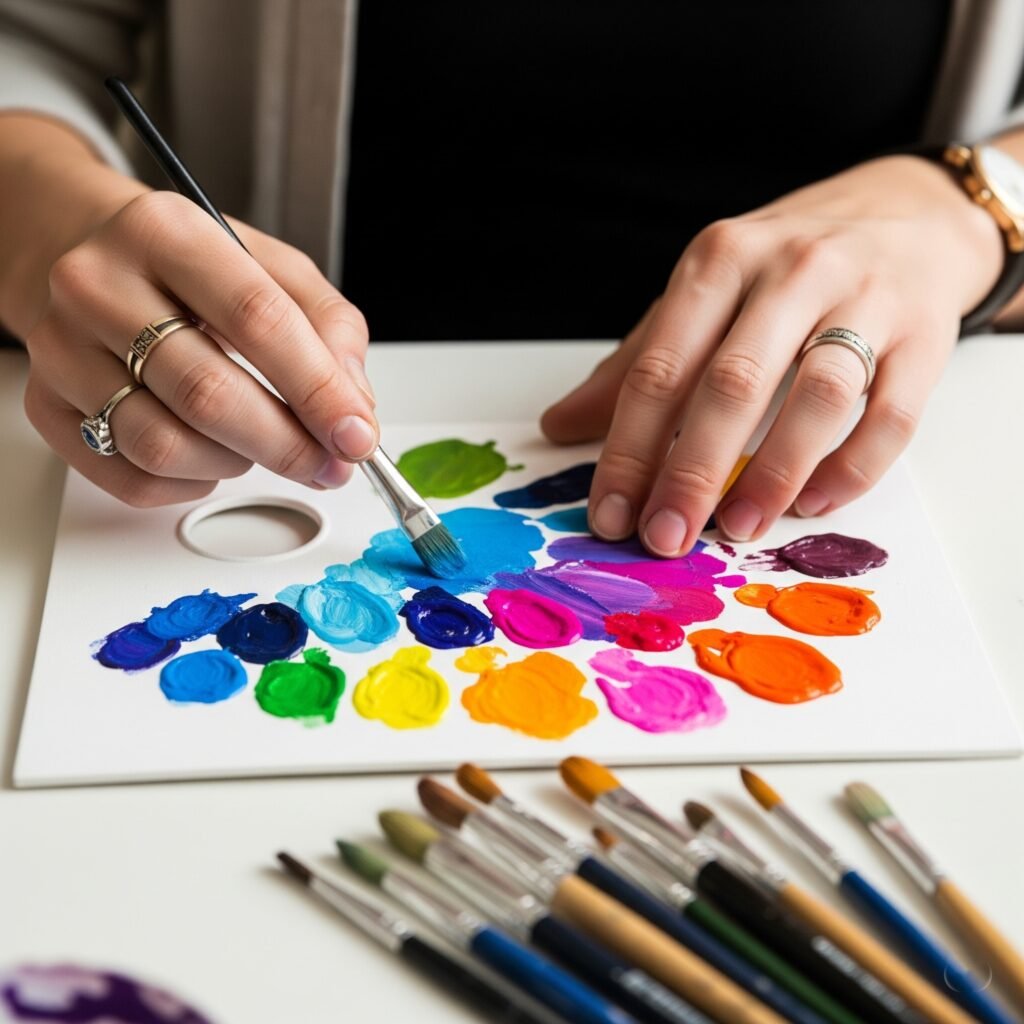
What is Gouache & how does it work?
The Special Properties of Gouache
What Makes Gouache Different from Other Art Styles? In contrast to regular watercolors, gouache has a higher ratio of pigment particles and is therefore more opaque. Gouache has its pigments ground relatively coarsely though still quite fine to the naked eye, compared to true opaque paints. It is the combination of a water-soluble binder (usually gum arabic) with these pigments that makes them magical. Gouache is special because of the heavy pigment load there’s a lot more pigment in every drop compared to watercolor.
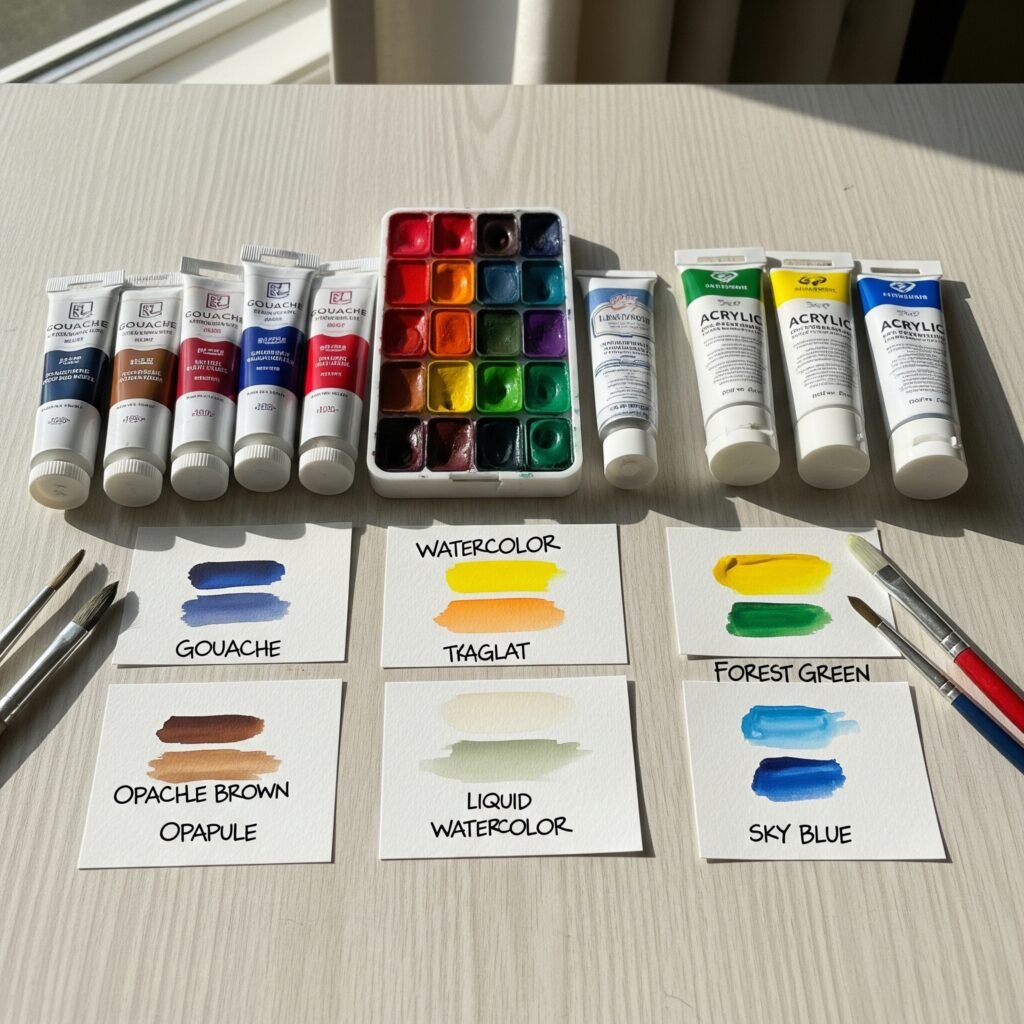
The chemistry of Gouache matte or gloss
So why does a gouache painting dry to be so nice and matte? The secret is in the physics of light and dried pigment. Pure pigment powder looks matte since it’s not shiny at all. Gouache is an extremely lean paint and contains a high pigment load, very little if any binder, or nothing but gum arabic to make it stick. In that you get an absorbing, not reflecting, surface and your signature velvety matte finish.
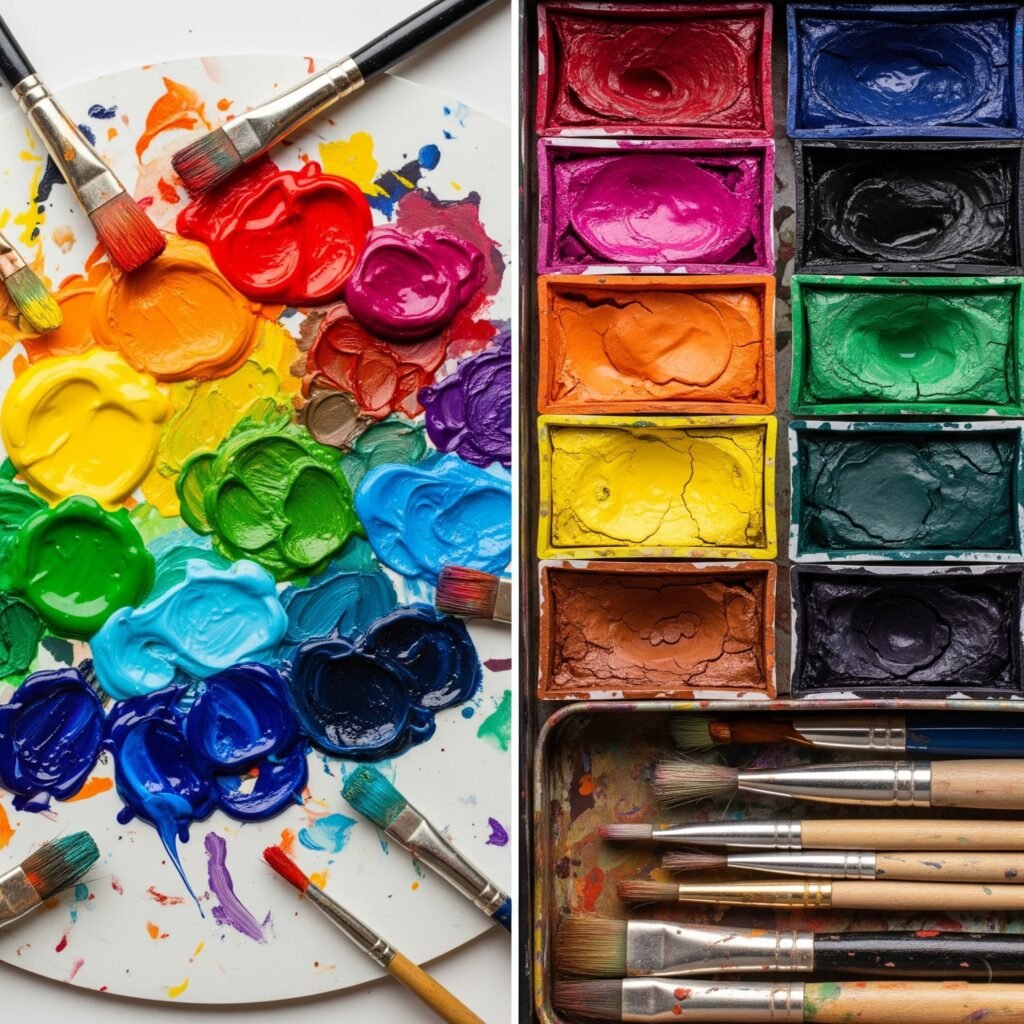
Related: Ways to Make Green Colors: Complete Color Mixing Guide
Gouache vs Watercolor vs Acrylic Explained
How Gouache Compares to Watercolor
Though it does use a similar binder to watercolor, gouache painting can lead down a far different path. Watercolor pigments grind to a fine dust and are less dense with dye per volume hence they naturally come out transparent. This is why we get those beautiful transparent, glowing qualities watercolor is known for.
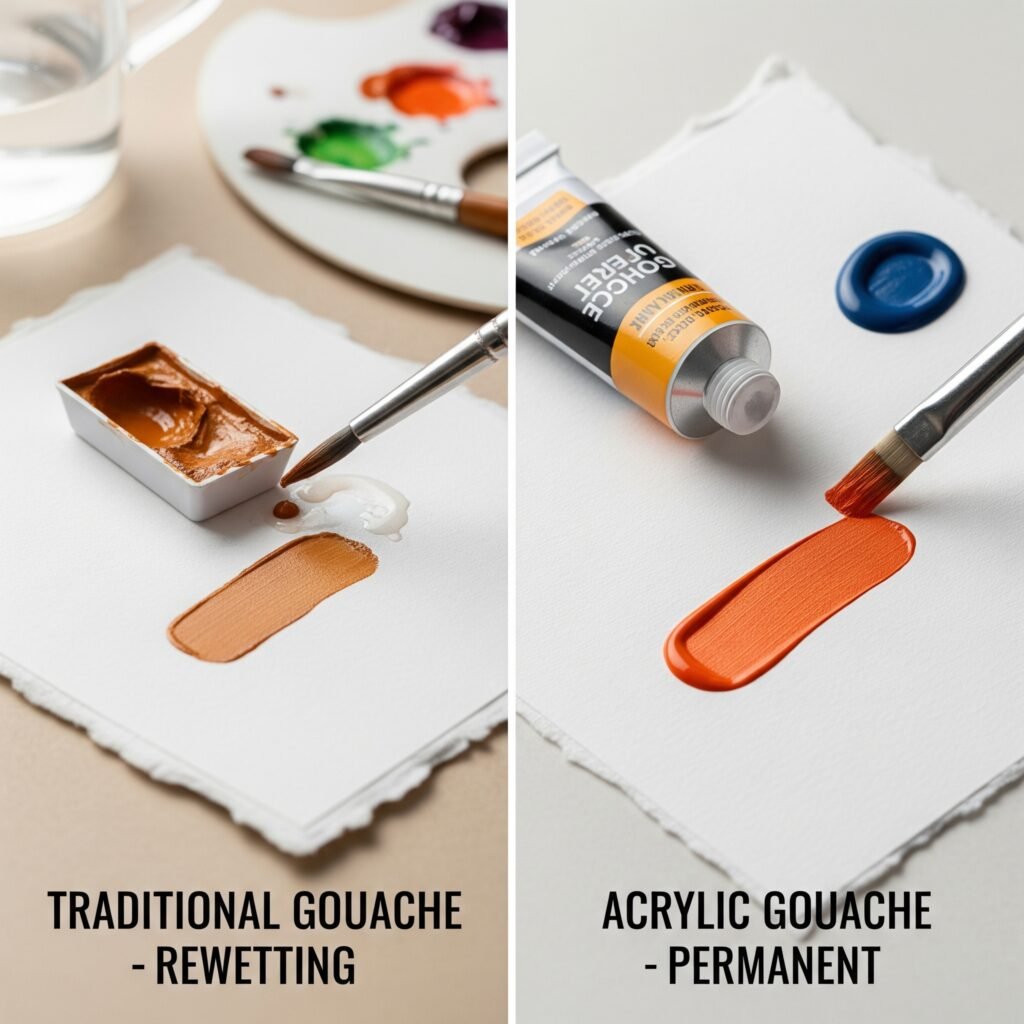
The Main Differences Between Gouache vs Acrylic Paint
Acrylic and gouache, while similar in that they can both create an opaque mark, behave wildly differently. When dry, it forms a flexible, elasto-plastic film of plastic acrylic raw water. A gel formula that sets in minutes yet is 100% waterproof and can be built up in thick layers without cracking. Gouache paint, however, has a low binder content and cannot be applied as thickly as acrylic without the risk of cracking or flaking. But in exchange, you get that beautiful matte finish and can also reactivate the paint to correct mistakes.
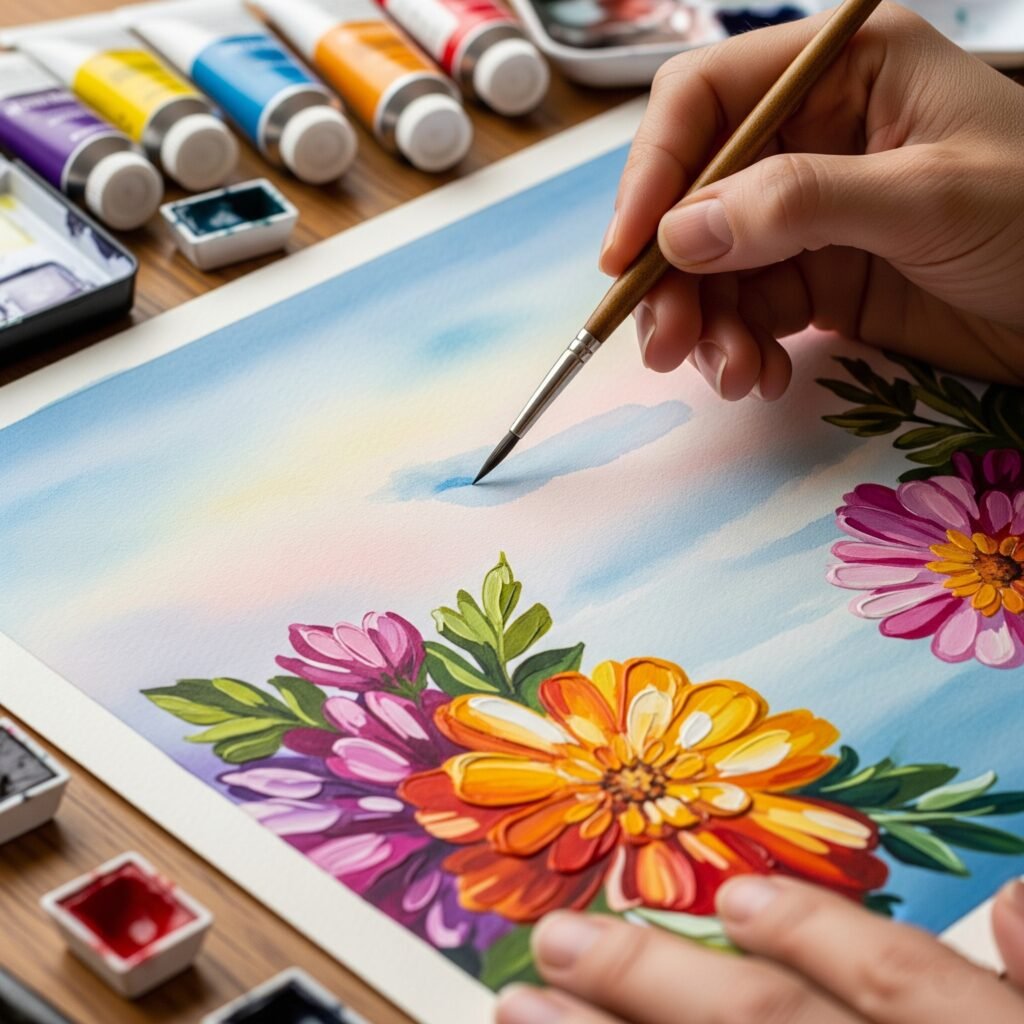
How and Why Some Gouache is More Transparent Than Others
Why not every gouache painting color is as white as all the others responsive one. The inherent opacity of any given paint is directly related to the nature of pigments that are used in its creation. Pigments (like most cadmiums and titanium dioxide) are simply naturally quite opaque. Others are by nature more transparent, such as phthalocyanines and quinacridones.
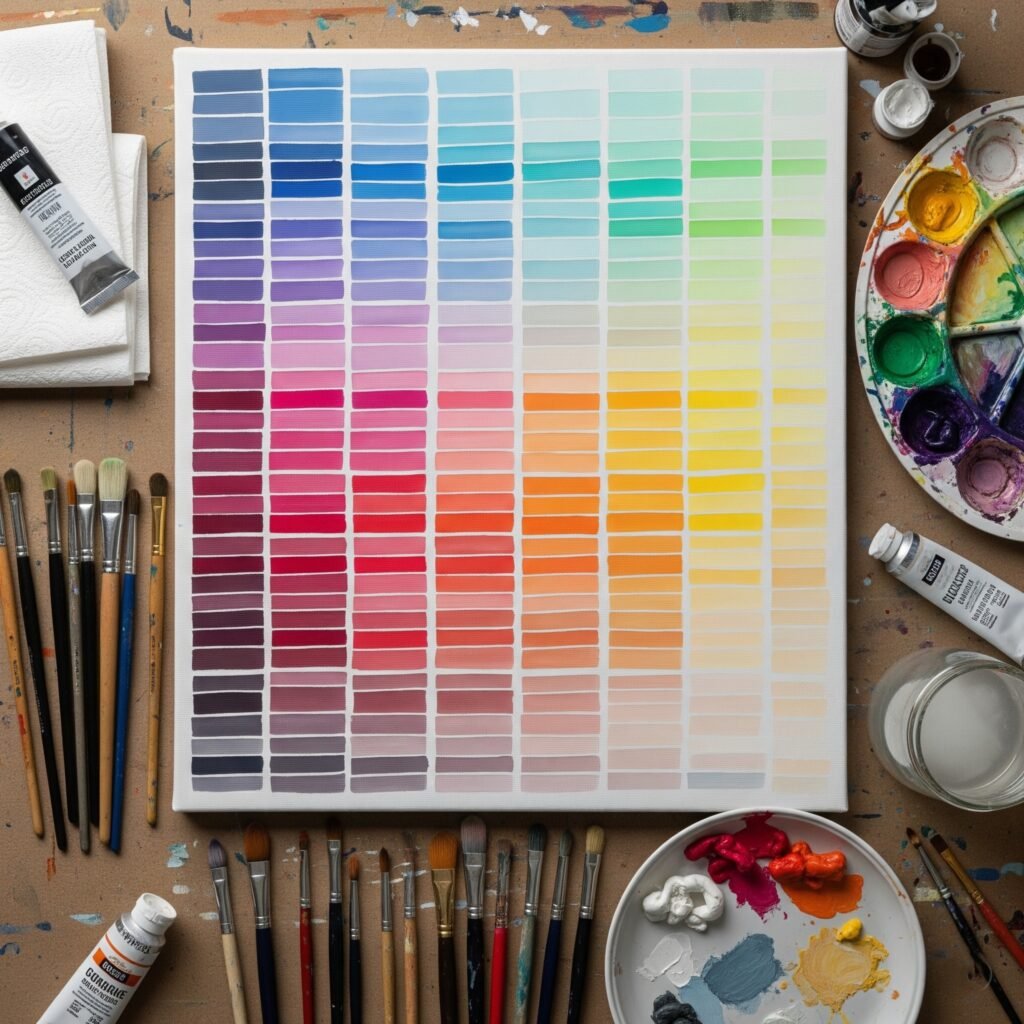
What You Must Have to Paint With Gouache
Choosing the Right Gouache Brushes
Gouache brushes are crucial to your experience with the medium. Gouache is a kind of an antithesis to watercolor, so in watercolor you might like a very soft and absorbent brush, but with gouache you see the benefits of having much more controlled water. Because synthetic brushes are more manageable, keep their water levels consistent, and often work easier than natural hair.
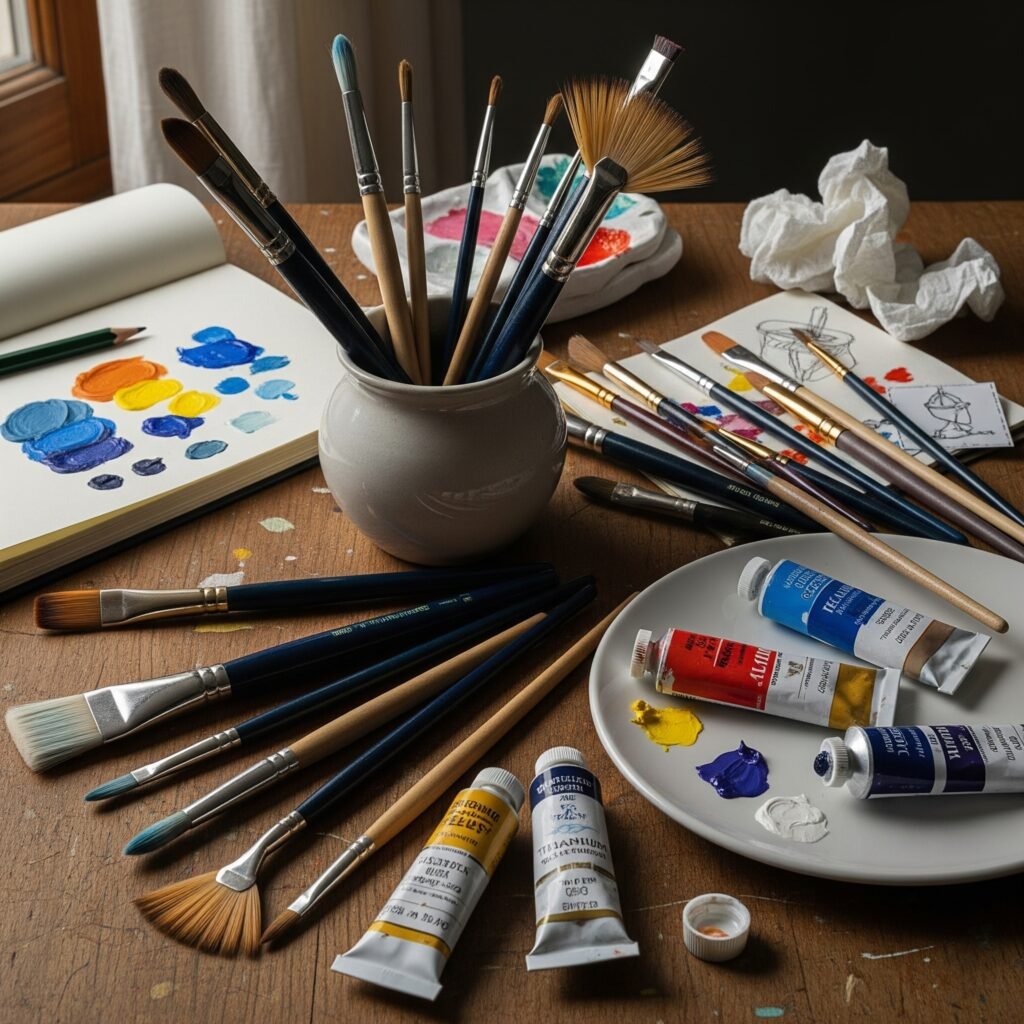
Gouache Work Application: Best Palettes
Given that moisture control is paramount with gouache painting the type of palette you have is incredibly important. Stay wet palettes are best because they enable your colors to remain workable for longer. Allowing you to keep your paints wet by creating a wet sponge underneath the special paper on which you put your colours on.
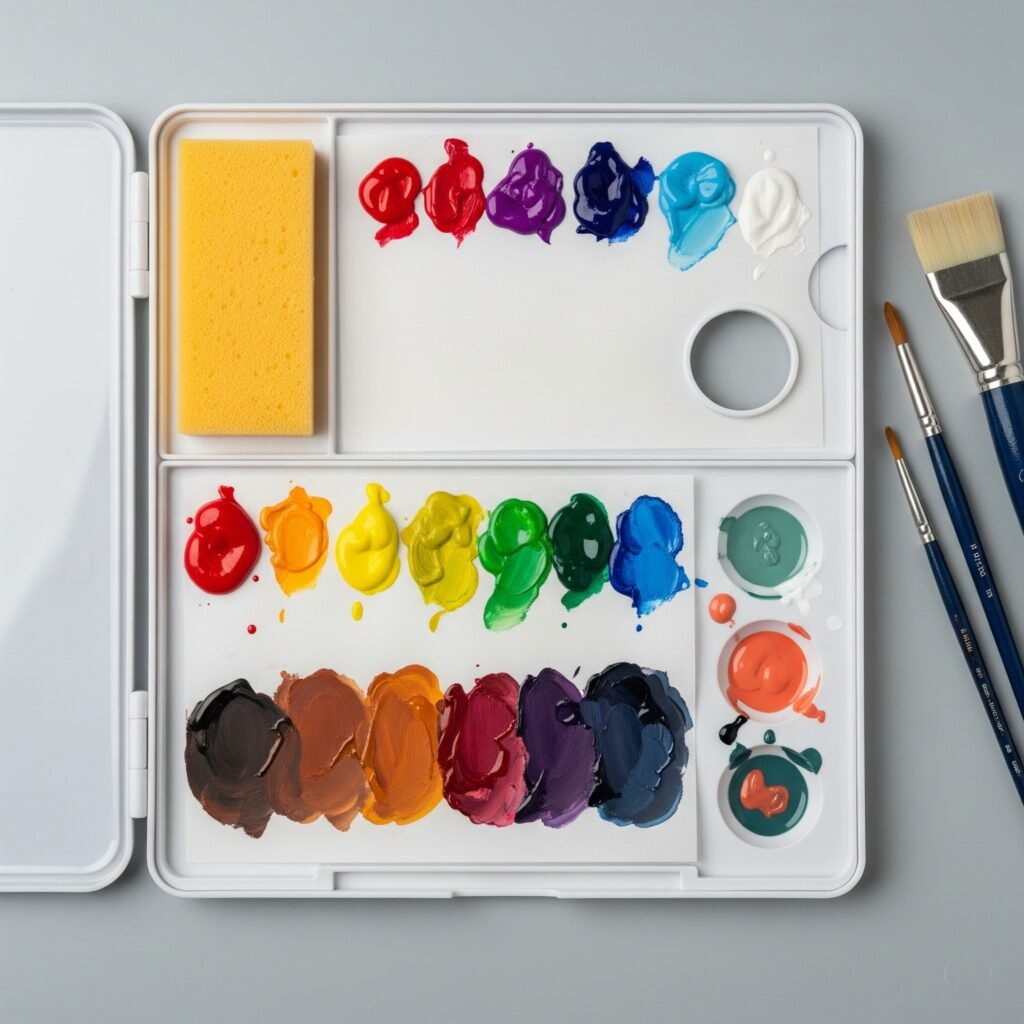
Plant Misters & Humidity Control
To get your gouache painting right consistency, you need to be aware of the moisture levels constantly. A fine mist spray bottle is one of the most important tools you can have to ensure clean breakages. Spritz your palette with water every 10-15 minutes while painting to prevent the colors from drying too quickly.
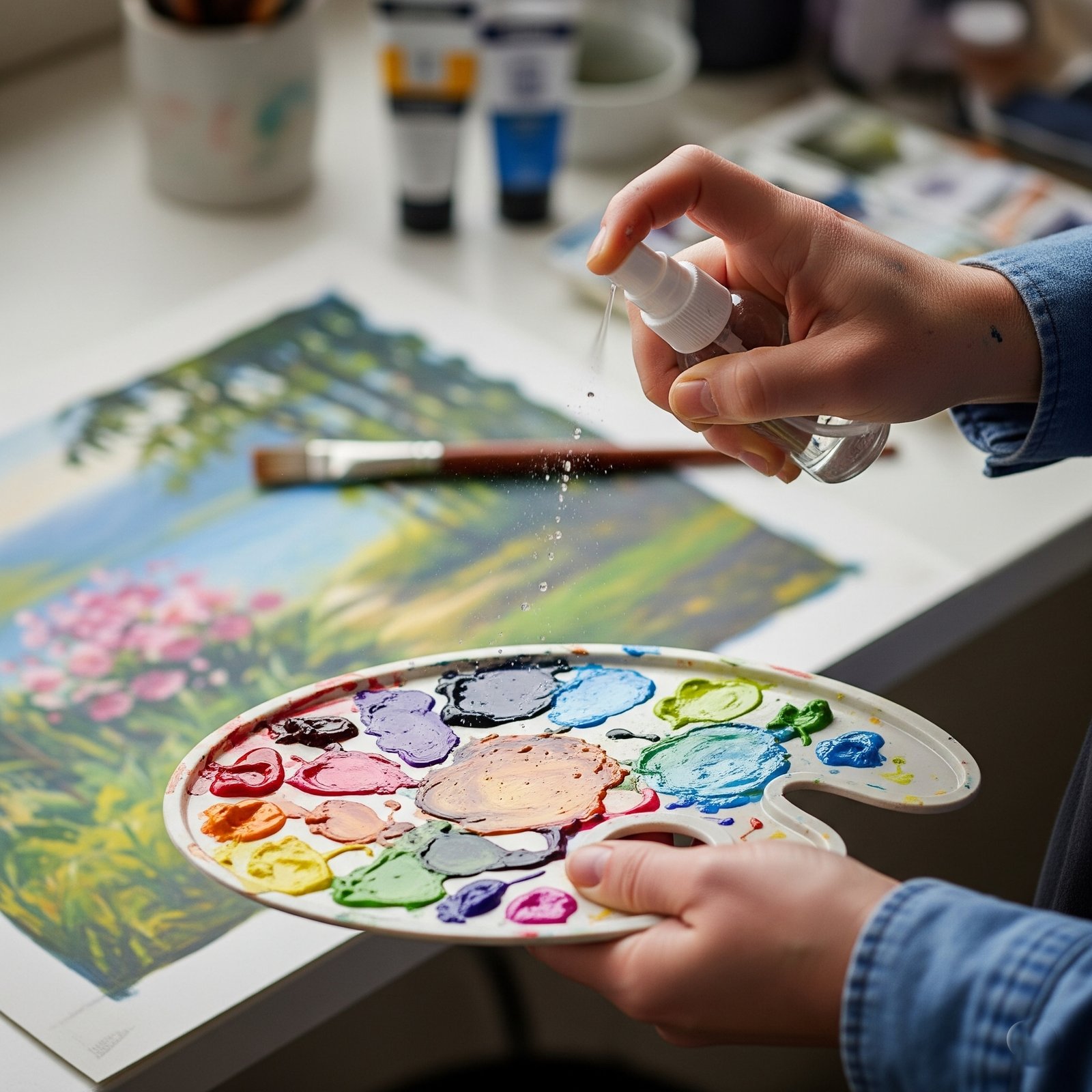
Paper for Gouache
Hot-Pressed vs Cold-Pressed Paper
The paper texture plays a huge role in how your gouache painting goes. Gouache is able to achieve a strong wash but also produce fine lines, and a hot-pressed paper’s smooth surface allows you to glide the paint over which results in even (non-streaky) color than that produced on cold press or rough paper. The texture bevels have a clean, flat surface that will not grab your brush meaning you will get the perfect coat without any bumps or ridges.
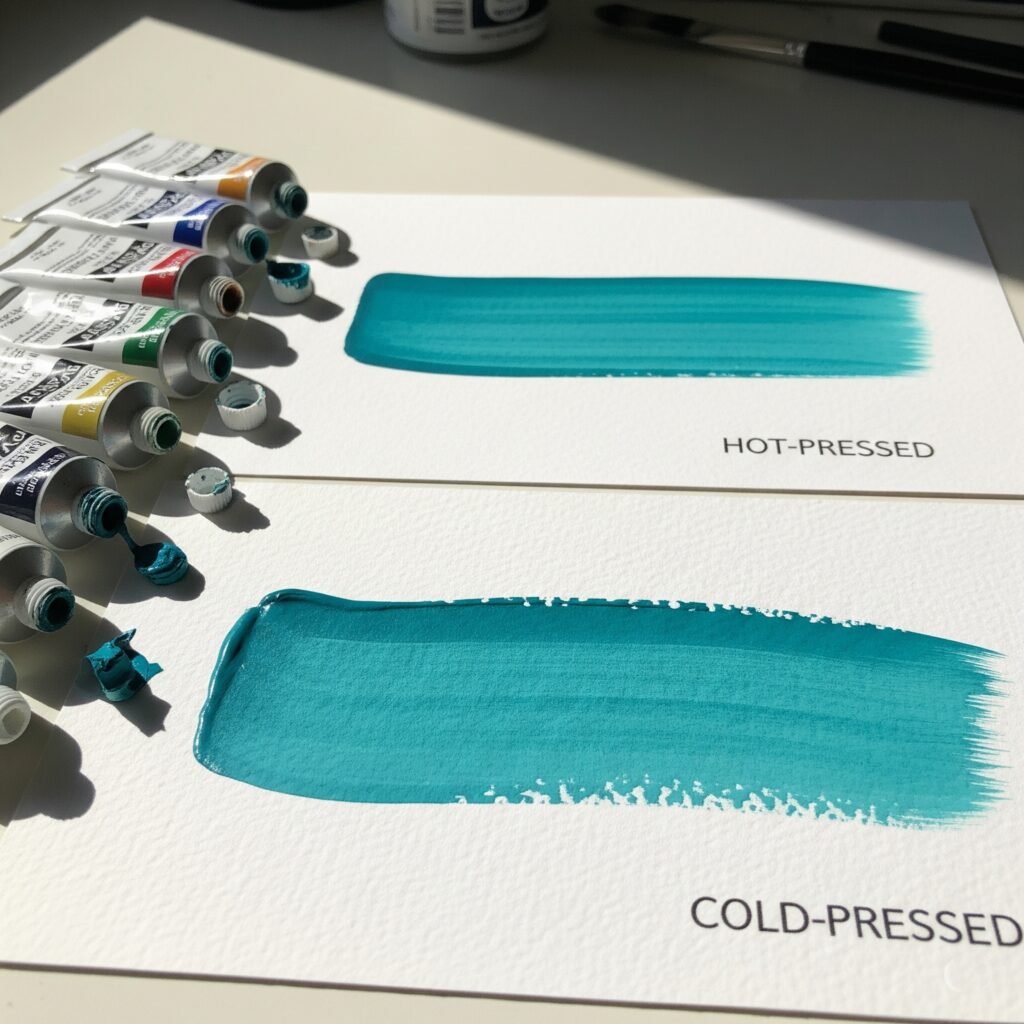
Paper Weight and Thickness Considerations
When painting with gouache, however, paper weight starts to become more of an issue as the medium is wet enough to warp lighter papers. But anything below 90 lb weight is going to bend, though it will be fixable if you flatten your painting when it dries. Heavier papers (140lb/300gsm or more) can handle the moisture better and typically stay flatter as you are painting on them.
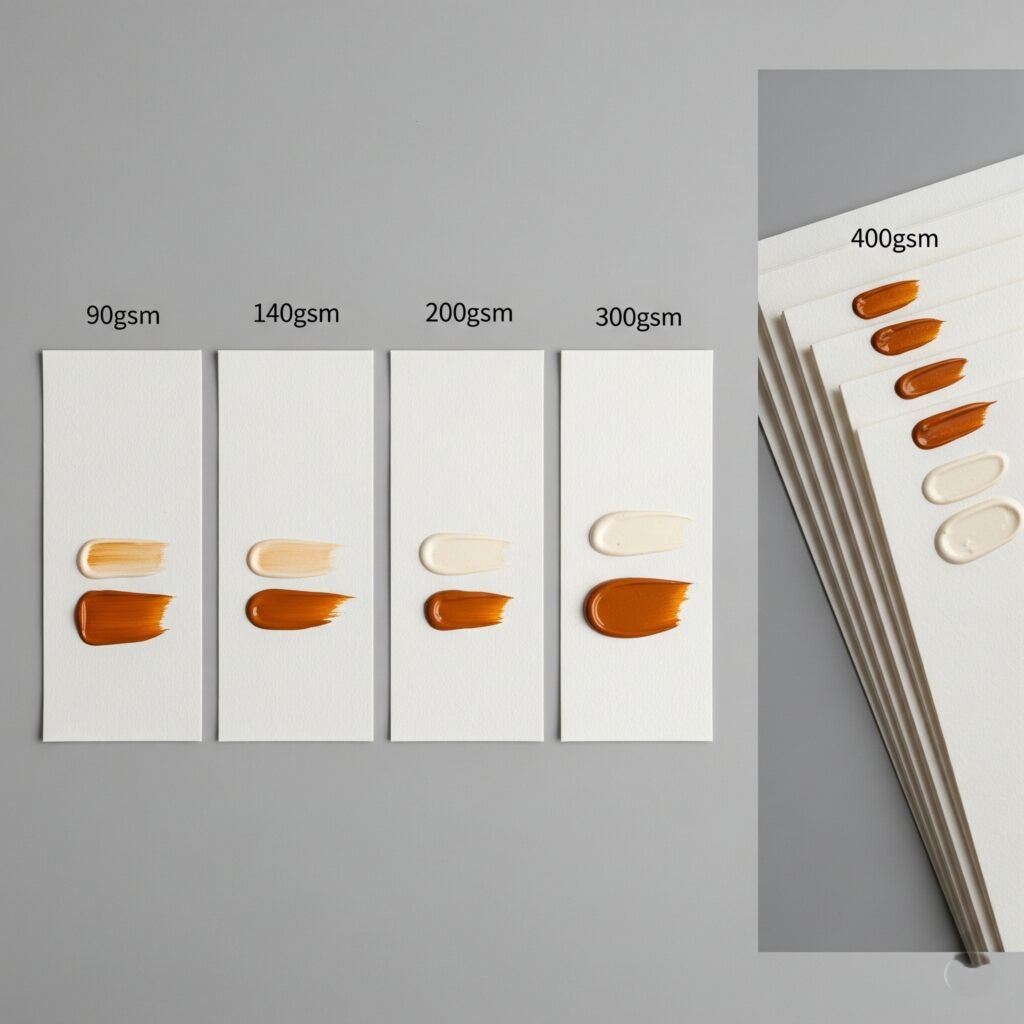
Toned Paper for Gouache Painting
One of the things that makes gouache so exciting to paint with is how gorgeously it sits on toned papers. Gouache is opaque, so you can lay down both lighter and darker values on top of a middle tone ground, a technique which often accelerates the painting process and leads to more complex color interactions. Some of the favorite paper colors are beige, gray and light brown papers that would yield nice color results with gouache-characteristic depth. This mid-tone takes away some of the intimidation of a plain white surface and ties your painting together right from the start.
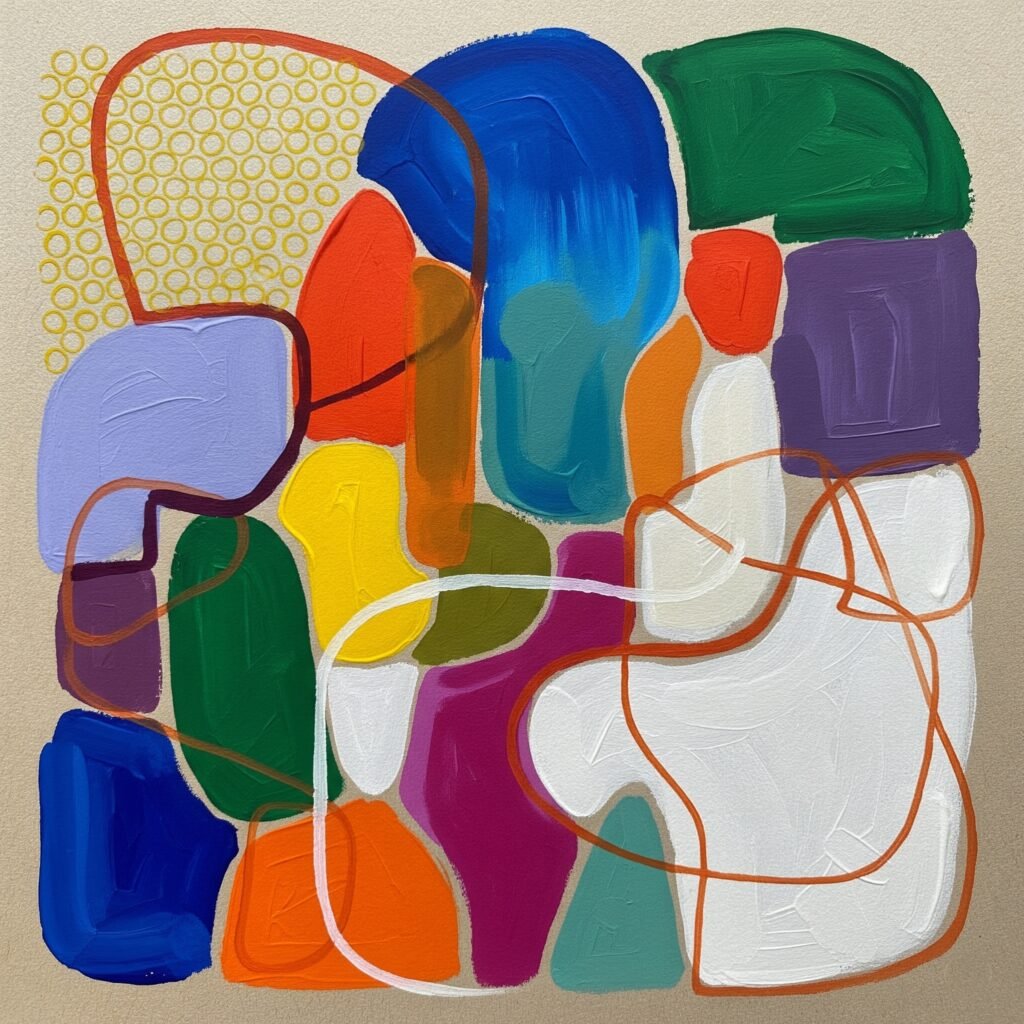
Color Mixing and Opacity Techniques
Achieving Perfect Opacity in Gouache
Whether gouache paint is covering something or showing, you have to have just so much paint on the brush at just the right point in its overall consistency. The paint is turned almost into a water color with too much water but applying it becomes a struggle if there is not enough. The consistency of glaze should be the thickness of heavy cream just about thin enough to brush easily but thick enough that it does not completely run.
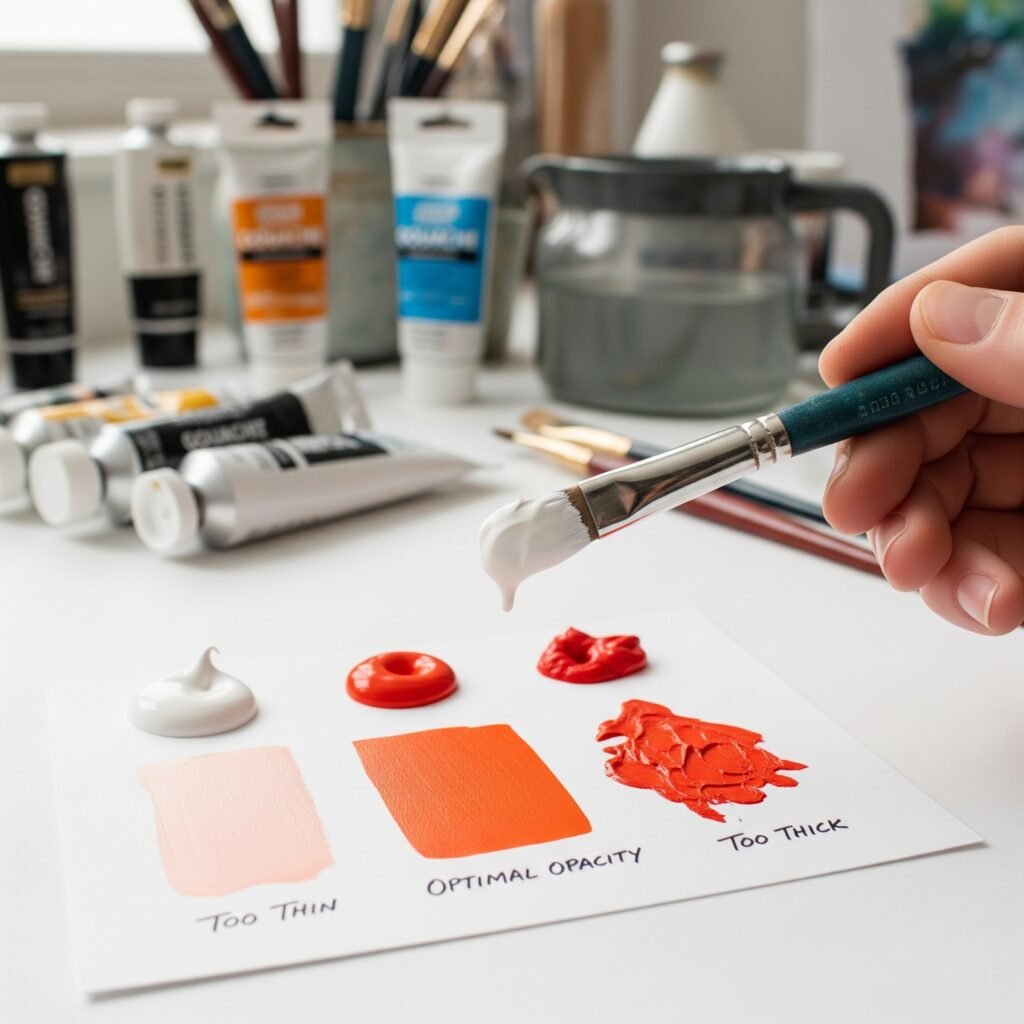
Color Mixing Principles for Gouache
By now you should understand how color mixing works in general with all painting mediums (oil, acrylic, and watercolor). In this case we need to talk about opacity because gouache paints are more opaque than other paint types. You can paint with light over dark; thus, you have more flexibility in approach to using colors than in watercolor. However, these colors can quickly overmix to a muddy gray due to the high pigment load.
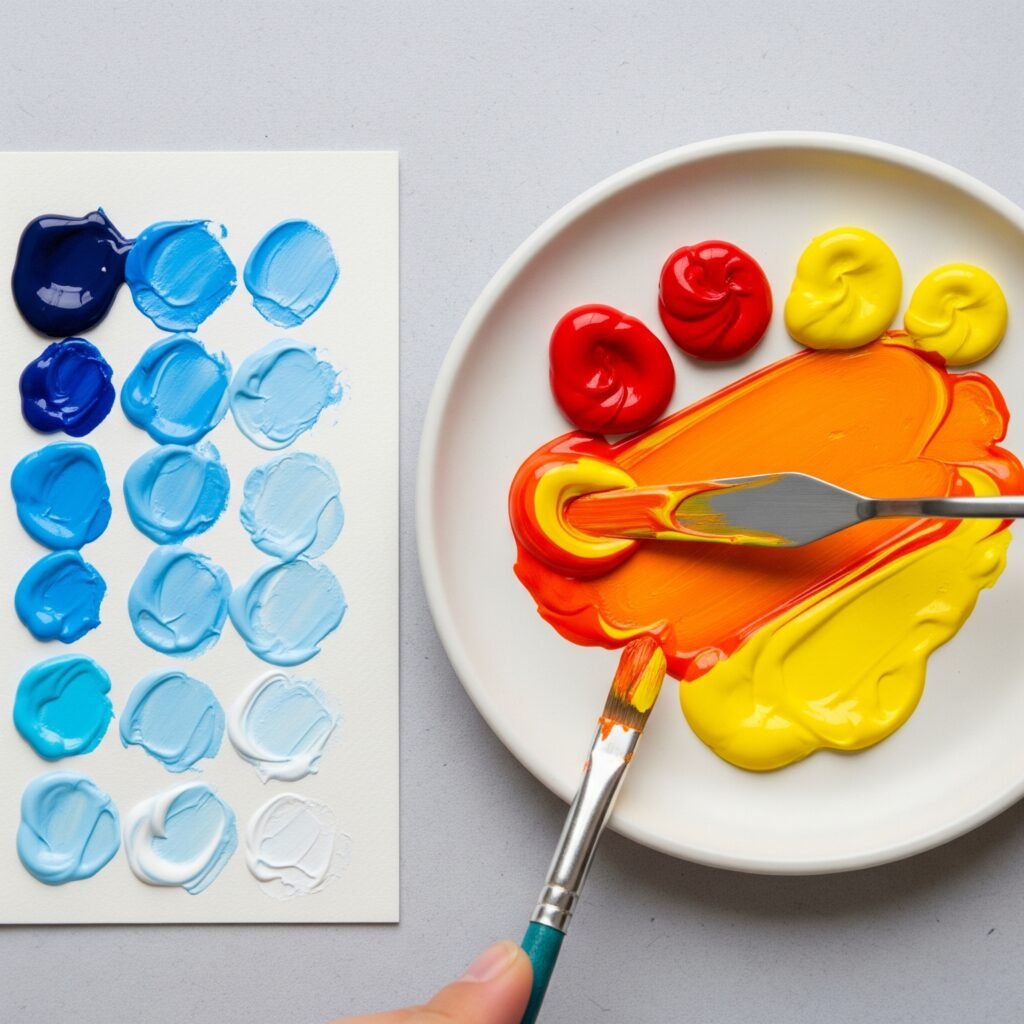
Understanding Color Temperature in Gouache
Because of the medium’s opacity and flat finish, color temperature particularly comes into play with gouache painting. Warm and cool warm relationships are some of the most apparent, and they can greatly impact the mood and depth in your paintings. Since unlit gouache has a matte finish and does not bounce light onto your viewers ‘like glossier mediums would, colors are arguably EVERYTHING in making something cool looking.

Preventing Common Gouache Problems
How to the Keep Them from Cracking and Flaking
An extremely annoying issue found with gouache painting is when the final work cracks or flakes off after drying on paper. This is because gouache has a small amount of binder in relation to other paints. And when you try to put it on too thick, there is not enough gum arabic left in the mix once the water has dried to glue all that pigment down onto the paper.
The answer is simple, do not ever paint with gouache thick enough that you can see those hills or ridges in the entire paint layer. If it take more than one layer to get that color intensity level you need, allow dye to completely dry between layers.
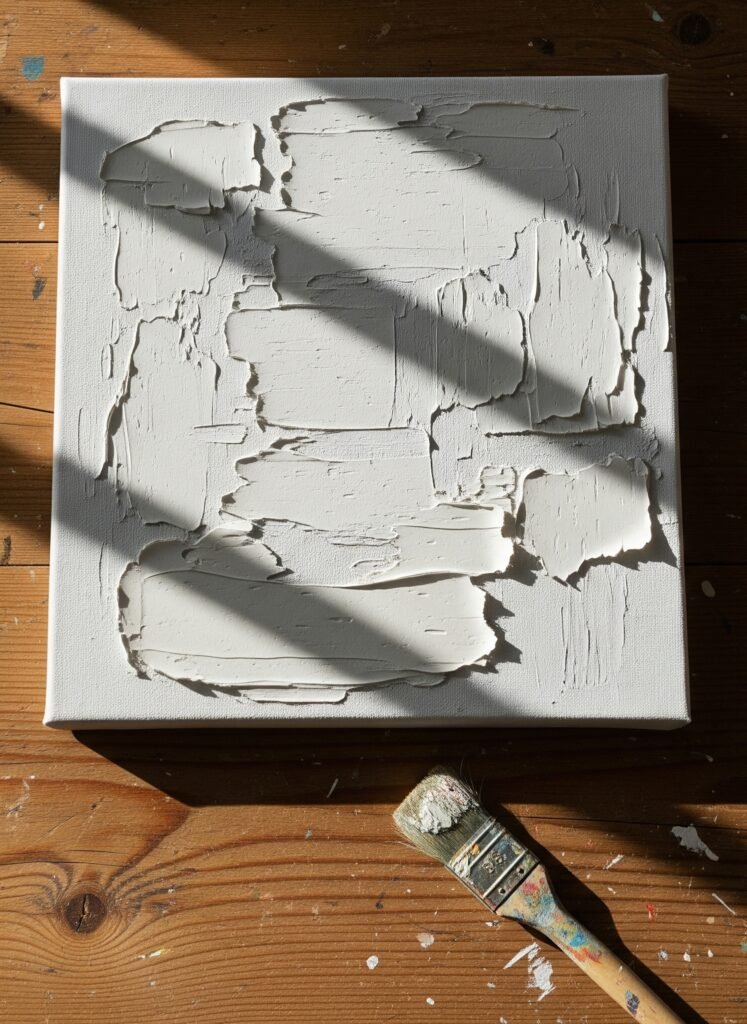
Dealing with Binder Separation
Many times when you open a tube of gouache, you find it is either running clear or has yellowish liquid coming out rather than paint. Here is an example of binder separation, which occurs when both the pigments and the gum arabic begin to separate from each other during storage. Worry not this is fixable! The liquid is nothing but the binder which comes out from the pigment particles.
The possibilities with such an issue in gouache painting are numerous. You are then forced to use a toothpick to stir the contents inside the tube (messy), or squeeze both the liquid and paint out of the bottle onto your palette and mix them together with a palette knife.
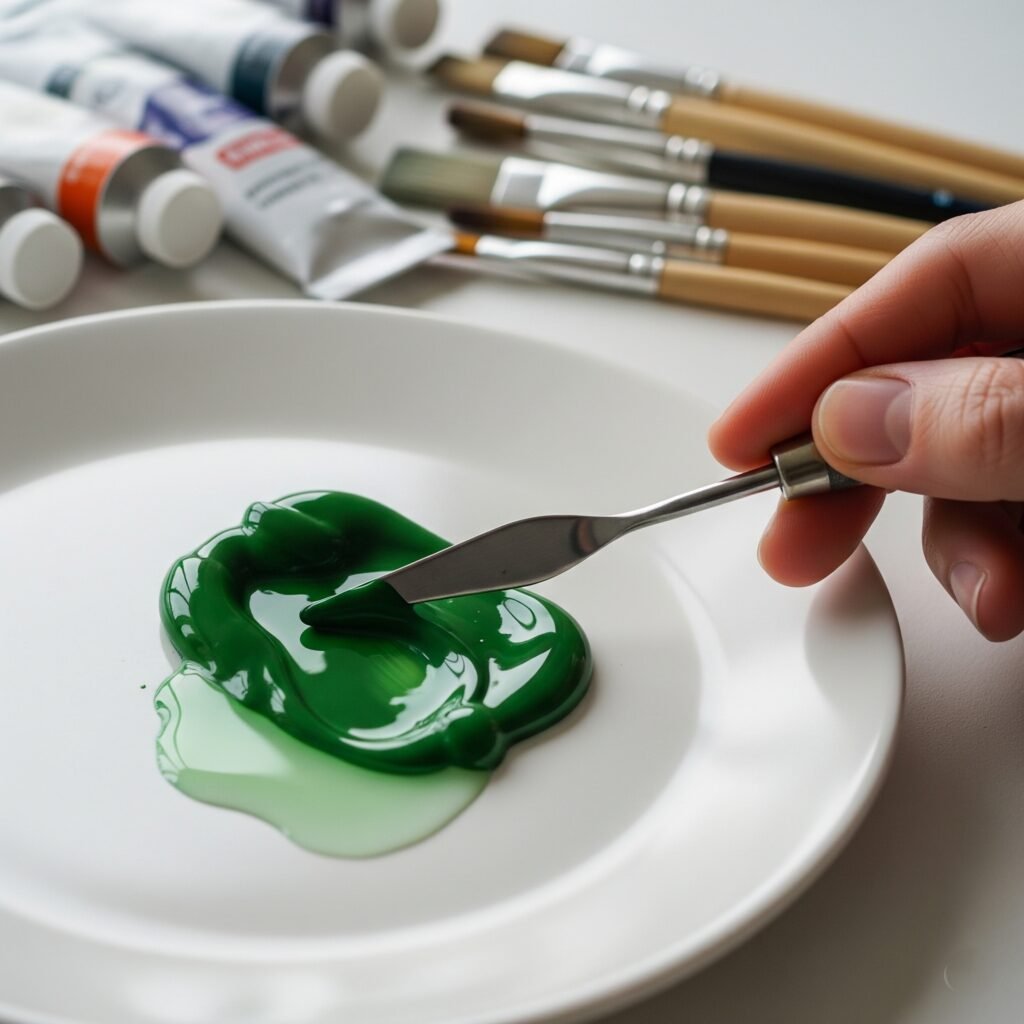
Preventing Unwanted Reactivation
When painting with gouache, generally the ability to rewet paint is an advantage, acceding when you add new layers of paint on top, but not always. That is particularly annoying when adding small details or with colors that differ so much. The secret is to allow each layer to dry completely before adding the next, then work as soon as possible with your new layer.
Do not work the areas together, as you do not want to mix the colors! If you use slightly less water in your brush on successive layers, upper layers won’t pick lower layers up.
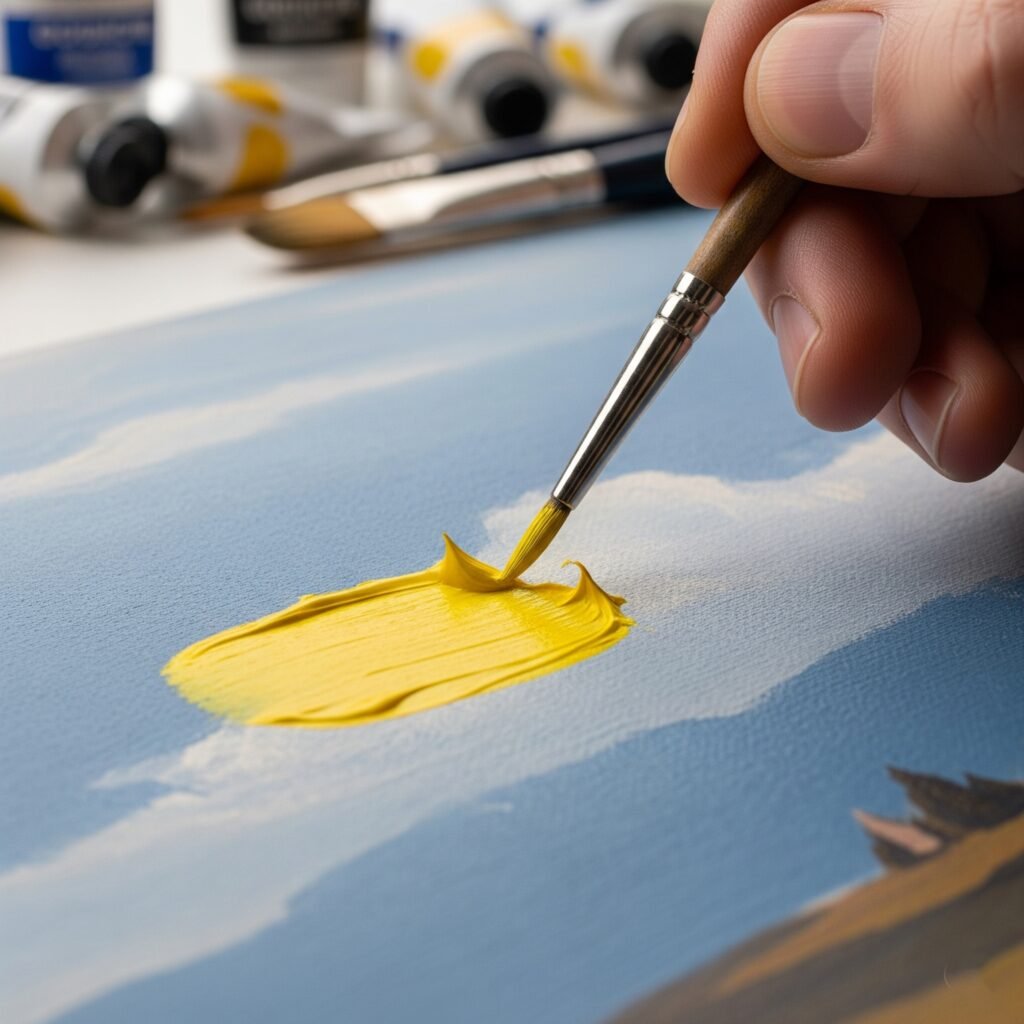
FAQs
What is the real difference between gouache and watercolor?
Here’s the real deal with gouache painting versus watercolor. It’s all about opacity and pigment load. Gouache has much more pigment packed into each drop, plus the pigments have a different grind size. That is, gouache can totally obscure what’s beneath it, whereas watercolor allows natural light to penetrate to the white paper. Regardless of what the end result is, though, gouache has an awesome matte finish when it’s dry, and watercolor remains a tad bit transparent.
Can I use gouache with my other paints?
Gouache painting marries very well with watercolour, because essentially they’re the same thing, only cousins rather than twins, sharing the same type of binder, only with different levels of pigments. Frequently I’ll begin a painting with a watercolour
How long does this stuff take to dry?
Gouache painting dries pretty fast! It’s surprisingly fast, which is nice and sometimes annoying. Thin painted applications will generally be touch dry within 5-15 minutes depending on how humid a day it is and how much you laid down. If you slathered on gobs of the thicker stuff, it could take 30 minutes to an hour for it to dry.
Why does my painting dry and look nothing like it did when it was wet?
I was a bit surprised by this when I first started working with gouache! It means you have to remember that wet gouache looks so bright and saturated because the light reflects off of the water in the paint. When it dries you are seeing the true matte finish of pure pigment, which really ends up looking duller and a bit chalky. This is just a normal change in gouache, and it is part of the magic of gouache. With hopefully more experience, you will learn to expect this change in colors and start premixing your colors to factor in the change in gouache when it dries.
